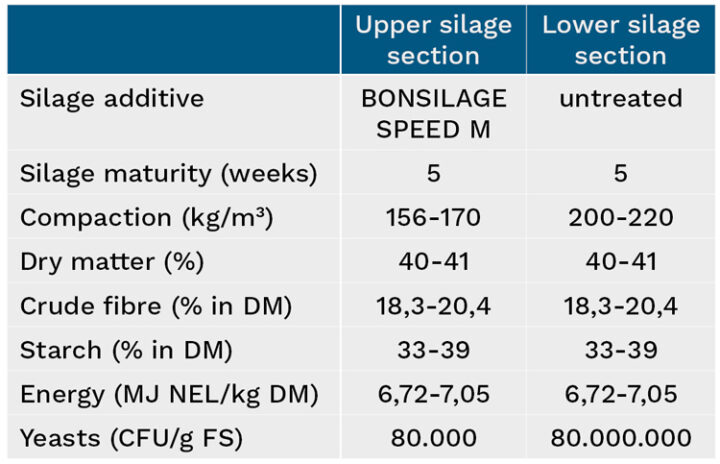
BONSILAGE SPEED M – indispensable in combating yeasts
Heavy rains and very damp weather conditions have made maize highly susceptible to infections. As a result, many plants were affected by high yeast levels at the time of harvest. Analyses of fresh maize samples revealed levels of up to 500,000,000 colony forming units (CFU) per gram of fresh matter. Even the “best” results for fresh maize carried 700,000 CFU/g. This also explains the partly elevated yeast contents in silages treated with BONSILAGE silage additives. Nonetheless, these silages are highly stable at the silo faces. Yeast contents continue to decrease as the formation of acetic acid increases throughout the ensiling period.
Without the use of BONSILAGE silage additives, unwanted microorganisms proliferate extremely, and maize silages have a much stronger tendency to reheating. A practical example illustrates this clearly: The lower part of the silo holds untreated silage, whereas BONSILAGE SPEED M was used in the upper sections. While yeast loads in the upper silage were 80,000 CFU/g FM after five weeks of ensiling, the rate in the untreated silage at the bottom was 1000 times higher, at 80,000,000 CFU/g. This clearly confirms that the use of BONSILAGE silage additives is indispensable.
There were also significant differences in the fermentation acid patterns: The silage treated with BONSILAGE had a substantially higher content of acetic acid than the untreated silage from the bottom section. It also contained propionic acid and propylene glycol, which were not found in the untreated silage.

